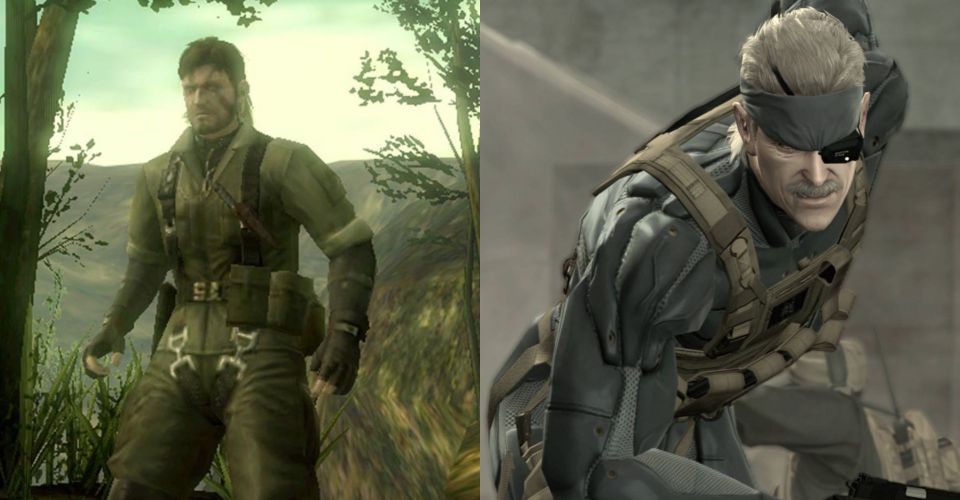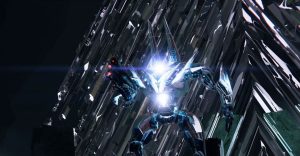The 15 Best Metal Gear Solid Games, Ranked By Metacritic

The talented Hideo Kojima brought Metal Gear to the gaming world way back in 1987 when it released the first title for the MSX2, Commodore 64, PC, and the massively popular, NES. It spawned a sequel in 1990 before going dormant for eight whole years, at which point the franchise returned triumphantly with the release of Metal Gear Solid on the original PlayStation.
The rest is history. Metal Gear Solid took the franchise from a top-down platforming perspective to a fully realized 3D world. It captured the spirit of major action movie blockbusters and wed it to smart, easily accessible gameplay, and a strong, unforgettable story. Since then, MGS games have been enjoying steady popularity up until 2015, when they went on hiatus. But out of all the games, which ones would gamers have said was the best?
Updated on July 9th, 2021 by Kevin Pantoja: While the history of Metal Gear Solid games goes back far, the reviews for it on Metacritic cover the more recent additions, starring with the PlayStation 1 classic from 1998. Since then, the franchise has released some true gems and a few entries that were met with more of a disappointing response. From the PSP to the PlayStation 3, Metal Gear Solid games are an intriguing bunch.
15 Metal Gear Solid: Portable Ops Plus (2007) – 65

When Metal Gear Solid: Portable Ops was announced, fans were pumped. It was the rare handheld game that felt like it could’ve worked on a bigger system. It was met with a positive response and a short while later, Portable Ops Plus was released for the PSP as well.
This wasn’t as well-received though that was likely due to it not being a full game. It was more of an expansion than a sequel and it put the focus on online play. While that was welcome, it did make it difficult for the game to match up to what the franchise had done to that point with Metal Gear Solid games.
14 Metal Gear Acid (2004) – 75

To this point in the franchise, all that had been released were legitimate stealth action games. That changed with 2004’s Metal Gear Acid as this was a tactical role-playing game instead. In fact, it actually moved the action element totally to the side in this.
Metal Gear Acid used a trading card system and focused on turn-based tactics, making for a unique experience. It still included some of the storytelling aspects the franchise was known for, which was appreciated by longtime fans.
13 Metal Gear Acid 2 (2005) – 80

Despite it getting positive reviews, not many expected Metal Gear Acid to spawn a sequel. Once again released for the PlayStation Portable, this was another turn-based card game and it included another story that picked up soon after the first installment.
A huge difference this time was the addition of the Solid Eye, a PSP add-on that allowed you to view the game differently with it, adding to a more realistic and unique feeling. That was part of what helped this version get stronger reviews than the previous one.
12 Metal Gear Solid V: Ground Zeroes (2014) – 80

Ground Zeroes was meant to serve as a bridge leading into the full Phantom Pain game. In many ways, it represents a concept idea or a tech demo for audiences to salivate over. It succeeded but received some flak, specifically related to the short playtime and limited mission directives.
There are only so many ways a player can replay the same objective twice, which caused Ground Zeroes to fall by the wayside once The Phantom Pain saw a release. It’s still a worthy introduction to that game for first-time players, particularly due to the level of exposition it gives, but once someone plays through it a few times, there’s little reason to come back.
11 Metal Gear Rising: Revengeance (2013) – 83

Technically, this game doesn’t have Metal Gear Solid in the title but it’s still one of the most notable releases in the franchise. 2013’s Metal Gear Rising: Revengeance gave fans something they had wanted since Guns of the Patriots hit shelves. It gave them a chance to control ninja Raiden.
Instead of centering on stealth, this was more of a traditional action game that featured some outstanding gameplay elements involving a sword and the fast style of Raiden’s attacks. Aspects like the soundtrack, boss battles, and more were praised, though some felt the story mode was a bit too short.
10 Metal Gear Solid: The Twin Snakes (2004) – 85

Metal Gear Solid blew the world up…twice. Its wildly cool blend of Hollywood action movie tropes, incredible stealth-based gameplay, and larger-than-life boss encounters ensured hot sales and the pushing of countless PlayStation consoles. It also signaled a massive shift into deeper, more mature storylines in games.
For one reason or another, the game was ported to the Nintendo GameCube in a somewhat reimagined format called The Twin Snakes. Lots of stuff had changed, and not always for the better. While the visuals were a major upgrade from the original, there were a few criticisms about the dialogue and changes to some of the game’s key scenes.
9 Metal Gear Solid 2: Substance (2002) – 87

One of the many things that Metal Gear Solid does well as a franchise is produce quality additions to their existing games. They did it several times and one of the best was Metal Gear Solid 2: Substance. Initially, this was a version of the sequel that was released for the Xbox but eventually came to Sony systems as well.
It had the elements of the original game itself but added fun modes like Boss Survival and Casting Theater (where you could put anyone in the cast into any cutscene from the game), as well as the European Extreme difficulty. The PS2 version even got a skateboarding mode.
8 Metal Gear Solid: Portable Ops (2006) – 87

Portable Ops was one of the first Metal Gear Solid games to be ported to a handheld; specifically the Sony PSP. It came hot on the heels of Metal Gear Acid, but this installment was meant to be a more story-driven successor to the games that came before. It’s also one of the few games to focus on squad tactics instead of lone-wolf infiltration.
The game continues Snake’s adventures six years after Metal Gear Solid 3 ended, with a story that plays into the larger narrative established in past games. It managed to score high, which is good news for a game that started as a AAA console title, only to get downsized for a smaller platform.
7 Metal Gear Solid: Peace Walker (2010) – 89

Peace Walker was a great Metal Gear Solid game that unfortunately came out at the wrong time. The PSP was in decline, and it was only a matter of time before the system would be put out to pasture. As such, sales weren’t exactly stellar, but at least it told a great story while giving Metal Gear Solid fans something to rave about.
The game sets up events that would eventually lead into the main Metal Gear narrative, and eventually the events of Metal Gear Solid. It’s a good game to play for those who aren’t familiar, with certain key characters that pop up in Metal Gear Solid V, such as Paz.
6 Metal Gear Solid 3: Snake Eater (2004) – 91

The first two Metal Gear Solid games were largely linear stories that tackled each section by offering players a choice of how to engage. Metal Gear Solid 3 took the concept much farther by throwing players into the jungle and forcing them to rely on the environment in order to complete their mission.
As such, it was the beginning of the series, moving away from the traditional formula into a more open-world approach. By today’s standards, it still feels condensed, but for fans who had mastered Metal Gear Solid 1 and 2, it was a welcome improvement. It also marked the shift in narrative towards Big Boss, as opposed to Solid Snake.
5 Metal Gear Solid V: The Phantom Pain (2015) – 91

Clearly, the most ambitious Metal Gear Solid game of the bunch, The Phantom Pain is the culmination of everything Hideo Kojima set out to accomplish with the stealth-action series. It was the first game to offer players a completely non-linear approach when it came to mission directives and goals.
Unfortunately, the game lost a lot of exposition in the process. The story took a backseat to gameplay as gamers concentrated on finding new ways to defeat foes, tackle challenges and build up their army. Part stealth action-adventure and part resource management game, The Phantom Pain wasn’t perfect, but it was clearly a semi-flawed recipe for success.
4 Metal Gear Solid 4: Guns Of The Patriots (2008) – 94

Guns of the Patriots had one major goal in mind – to wrap up the Solid Snake story arc, once and for all. It was an ambitious title, set on shaky footing due to the leap backward in time that occurred in Metal Gear Solid 3. Yet, this highly anticipated game hit the PS3 with full thunder, and the rest is history.
The narrative is so grandiose that it’s hard to follow at times, particularly when it comes to the long cutscenes. In between all the talking, there’s one heck of an incredible stealth tactics game for players to enjoy. It’s epic, and its reach sometimes exceeds its grasp, but Metal Gear Solid 4 is a spectacular game all around.
3 Metal Gear Solid 3: Subsistence (2006) – 94

Though Metal Gear Solid 3 made a good enough splash on its own, it was marred by aging gameplay mechanics that detracted away from the diverse open world that it was boasting. Subsistence fixed that by integrating a dynamic new camera system into the game, including a few discs worth of bonuses for Metal Gear Solid fans to entertain themselves with.
In many ways, Subsistence was the “Special Edition” of Metal Gear Solid 3, and it outranks the original release. Gamers who want the definitive edition should definitely pick it up, as there’s a lot to unpack and enjoy.
2 Metal Gear Solid (1998) – 94

The first Metal Gear Solid game was amazing on so many levels, and it’s still the entry that other chapters are based on. It was the first game to revive an old Konami property without dismissing everything that came before it. As such, Metal Gear Solid was a continuation of the classic Metal Gear games, rather than a reimagining. It also propelled the first PlayStation to the forefront of the video game console wars, giving it a major win.
The mixture of high-octane action, adrenaline-pumping stealth mechanics and memorable story helped “solidify” Metal Gear Solid as the action franchise to beat. It’s still a masterpiece despite its aged play mechanics and graphics, and no subsequent sequel has quite managed to balance all the elements so perfectly.
1 Metal Gear Solid 2: Sons Of Liberty (2001) – 96

Fans whose love for Metal Gear Solid were eager to get their hands on the sequel, and it delivered. It wasn’t a perfect experience, however. Many gamers were angry when they learned that Solid Snake would not be the game’s primary protagonist. Some felt it was a bait and switch on Konami’s part, while others simply disliked the character of Raiden.
Nevertheless, Metal Gear Solid 2 hit the right notes and delivered upon everything that made the original such a hit. It was bigger, more ambitious, and far more ominous in tone. It would also mark the first Metal Gear Solid game to move fully into a weirder narrative territory, which would become a staple of the series from that point on.
About The Author

















